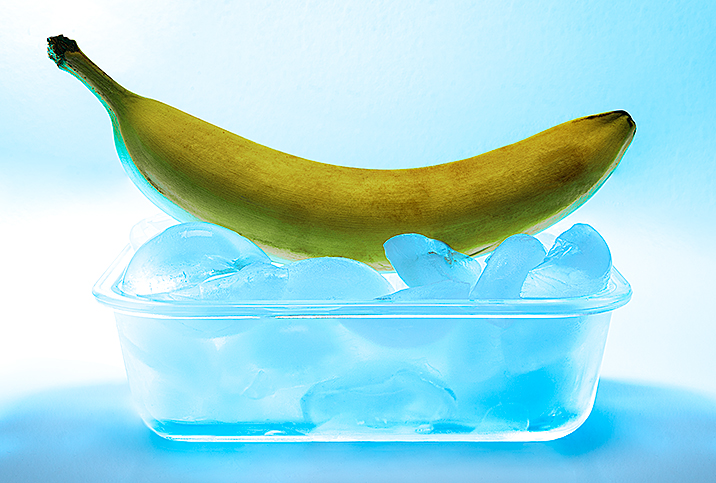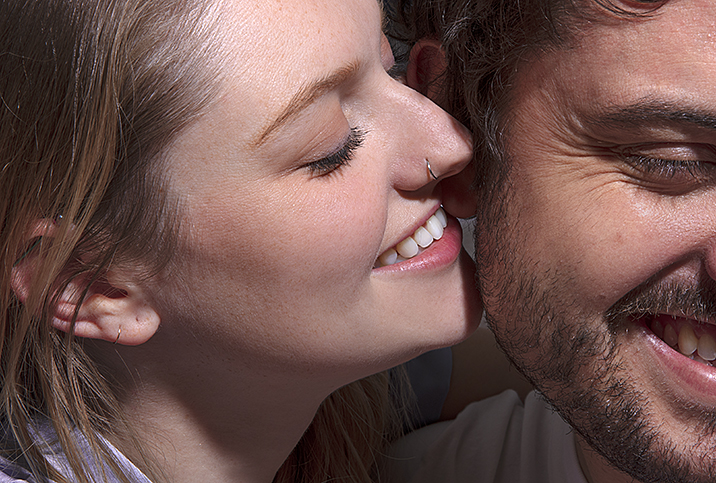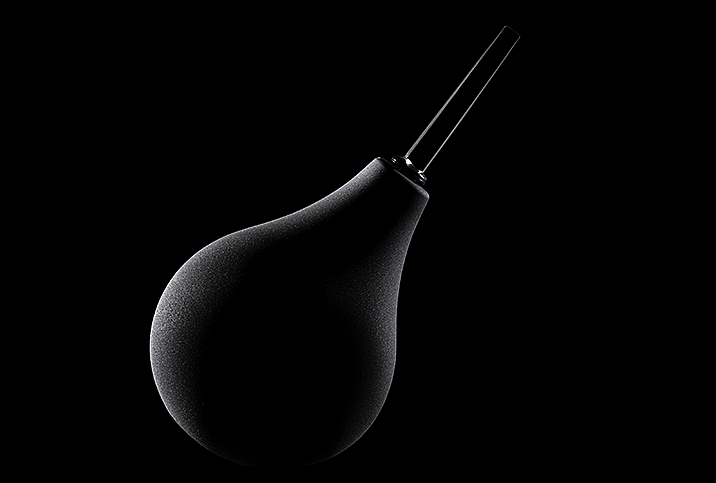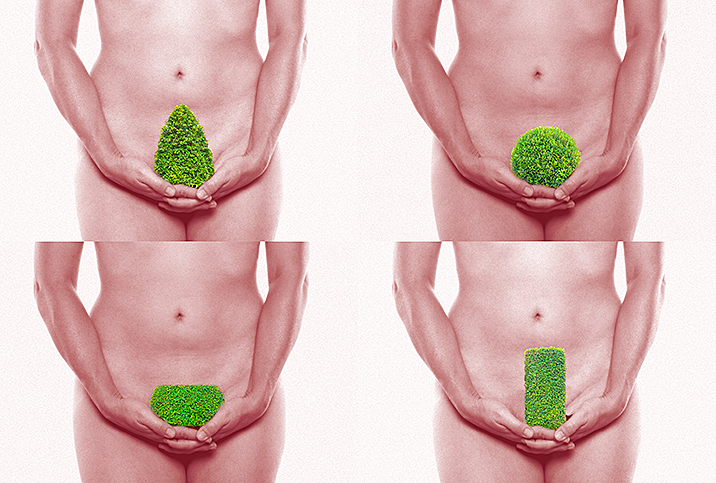Why People are Worried About What Their Anus Looks Like
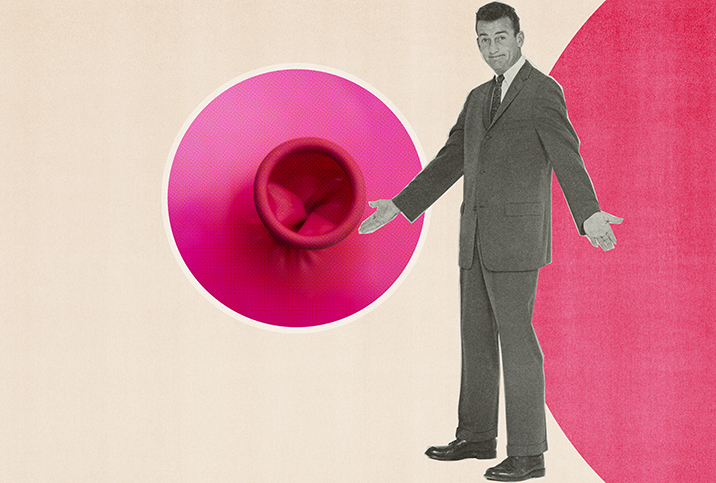
At 18 years old, sex educator Topher Taylor started working in a London sex shop and soon found himself fascinated by one product in particular: anal bleach.
"I have quite big butt cheeks that rub together, so the skin was darkened by the time I reached my 20s," he explained. "I decided to use bleach to lighten the area and it worked really easily. It doesn't hurt—it actually feels like quite a tingly, nice sensation."
Now 31 years old, Taylor still bleaches "once or twice a week."
Butthole beautification is on the rise
And Taylor isn't alone. Exact statistics are hard to pin down, but outlets including Forbes have reported on the rise of intimate bleaching procedures over the last few years. There are other anal beautification techniques on the market, too. From anal waxing to sphincter reconstruction surgeries, there are a plethora of options to keep your pucker looking light and tight.
According to the law of supply and demand, this increase in consumer products means there must be plenty of us feeling anxious about the aesthetics of our assholes. Which leads us to the big question: Why?
"Both anal reconstructive and cosmetic treatment rates have definitely increased," said Evan Goldstein, D.O., who has performed countless anal reconstructive surgeries in his decades of experience as a cosmetic surgeon and firmly believes the pandemic has played a role in their rising popularity. "The awareness of these types of procedures and available resources has finally led to practical solutions. The timing of this, along with the pandemic, has set the stage for this surge in demand."
Arguably, certain specific demographics are over-represented in these rising rates. "I've been surrounded by porn and sex workers since I was 18 years old, so it's hard not to feel the pressure to have a pretty butthole," explained Taylor.
Notably, porn performers like Dolf Dietrich and Alexis Monroe have been open with fans about their quest for the perfect anus, to the extent that Monroe agreed to be filmed for a live, educational demonstration of the bleaching process. Goldstein concurred that beauty standards differ across various demographics. In his opinion, gay men generally "use their anal assets more than other communities," so it makes sense that these anal sex aficionados care more about the aesthetics of their assholes.
A good alternative to surgery
Specificity here is key, though. Fistulas and rectal cancer can necessitate anal reconstruction surgeries, so their ongoing popularity isn't solely cosmetic.
"Very few of these surgeries are simply for cosmetic concerns," said Goldstein. "The overall function of this area of the body plays a critical part in the surgical decision-making process. Typically, one goes hand-in-hand with the other." Basically, if you already need surgery for rectal prolapse, why not request an aesthetic touch-up while the doctor is down there?
As for nonsurgical treatments, such as bleaching, waxing and anal Botox, Goldstein cited a list of potential motivations. From skin tags caused by hemorrhoids to localized acne brought on by excessive shaving, there's a whole host of reasons someone might pursue beautification treatments.
The most controversial of these procedures is undeniably bleaching, with many arguing the pressure to lighten buttholes is tied directly to racist, Eurocentric beauty standards. Comedian Sasha Rosser alluded to this with a meme-worthy joke: "Don't call it 'bleaching your asshole,' call it 'rectal gentrification.'"
Undeniably, the wider practice of skin-bleaching has a long, colonialist history. In a fascinating essay for The Wellcome Collection, writer Ngunan Adamu traced the roots of skin-whitening products back to poisonous, arsenic-laced DIY treatments. These products and practices originated in Europe but were exported to Africa and Asia by colonizers who brought a white supremacist ideology with them on their so-called "civilizing missions." The impact of this rhetoric is still prevalent today.
Life's a bleach
Making these arguments for anal bleaching specifically is trickier, though, as anal procedures are more commonly used to even out skin tone than to lighten the overall color. YouTube creator Shailah Leshé filmed a myth-busting video packed full of information specifically for Black women, and there's no shortage of women of color online sharing their intimate bleaching treatments with their followers.
Even if societal pressure factors into these decisions, Goldstein argued there's nothing wrong with "aspiring to our own ideals of perfection. It's 100 percent okay to want to look and feel sexy. Life is too short not to be completely happy with how a part of your body looks and functions."
Whatever the reason, it seems society is gradually accepting that anal beauty treatments are here to stay.
"I think the idea that we all need to have a flawless pink ring is not attainable for lots of people, and that needs to be understood," clarified Taylor, who joked he "thinks all buttholes are pretty––but that's because I'm a slut!"
In his eyes, the trusty anal bleach is a fail-safe confidence-booster in the bedroom. The "nice, tingly" sensation of the bleach itself is an added bonus.
"I really love anal sex, so feeling nice and bright down there helps me feel sexy," Taylor explained. "I really do it for me more than anyone else."







